Things to Do in Upper Qeparo: Semi-abandoned Village in Albania
11 min readHidden in the hills behind the coast, between the popular Porto Palermo and Borsh Beaches, Upper Qeparo is a hidden...
Hidden in the hills behind the coast, between the popular Porto Palermo and Borsh Beaches, Upper Qeparo is a hidden gem on the Albanian Riviera.
Accessed via a steep road that follows the Apolis Valley, Upper Qeparo (pronounced ché-par-o) is separate from Lower Qeparo, a newer town that has been established on the beachfront. Despite being partially abandoned, the elder Qeparo is an excellent example of a traditional Albanian village.
Upper Qeparo is a place to see traditional architecture and experience a slower pace of life in a less-touristy corner of Albania. It also has majestic sea views, castle ruins, and – surprisingly – two very good restaurants.
This guide to Upper Qeparo covers the old village including Ali Pasha’s Tower, plus things to do nearby.
Please note: This post contains affiliate links, meaning I may earn a commission if you make a purchase by clicking a link (at no extra cost to you). Learn more.
Transparency: Our two-night stay in Upper Qeparo was hosted by Villa Porta. Our accommodation was provided free of charge, but all other expenses were covered by us. As always, all recommendations remain 100% my own.
Why visit Upper Qeparo?
On our second day driving down Albania’s coastal road, we rounded a corner on the snaking highway and spotted a collection of stone buildings clinging to the side of Mount Gjivlash high above a cove. At first I assumed it was the ruins of a castle. Then I realised this was in fact our destination.
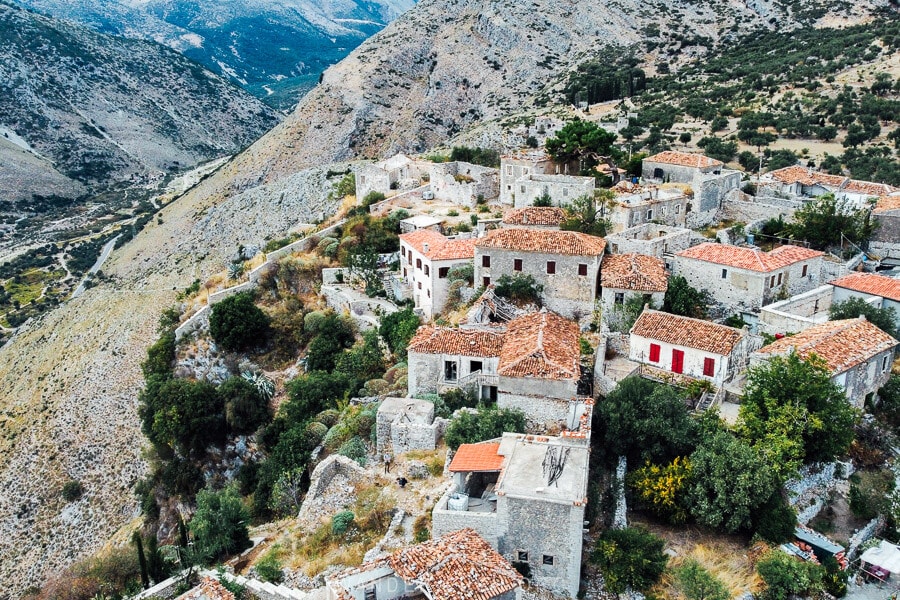
Home to a handful of households, Upper Qeparo is an Iron Age settlement that was Greek-speaking until the early 20th century. Today most residents speak Labërisht, a variant of Albanian.
After the fall of communism, lifelines to villages like Qeparo were severed and most families emigrated as a result, leaving their ancestral homes behind. Many of these ancient stone buildings are now in a state of disrepair, leaving Qeparo with a melancholic sense of faded beauty.
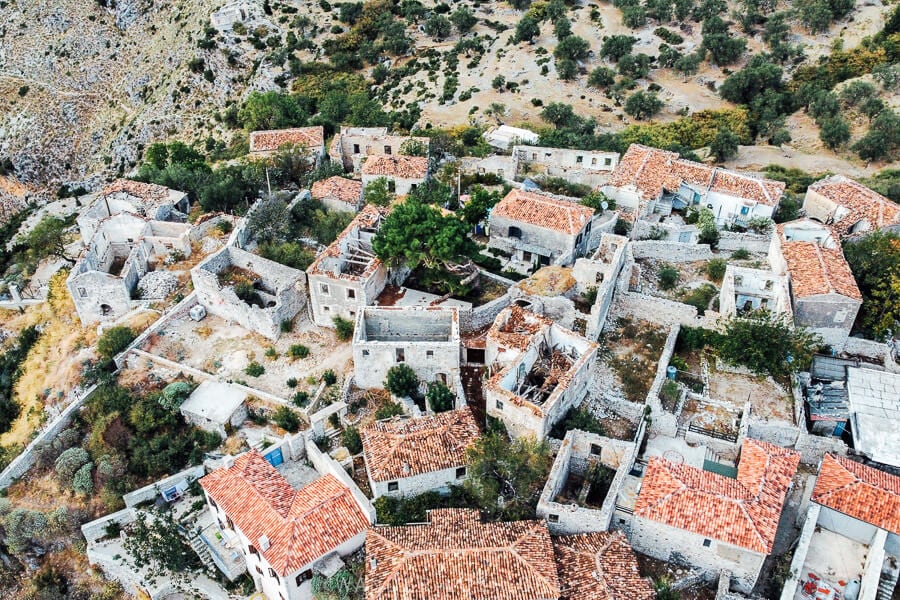
Stone laneways fringed by olive trees and ochre-coloured earth, Upper Qeparo literally feels a world away from the beach town below. You can catch a glimpse of the sparkling blue sea from certain points around town, but for the most part Qeparo feels like a country village.
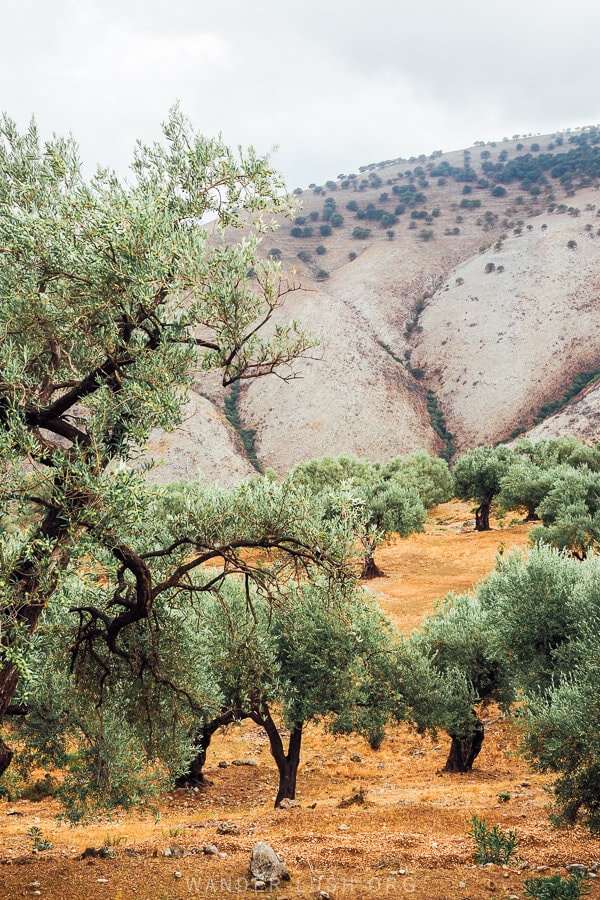
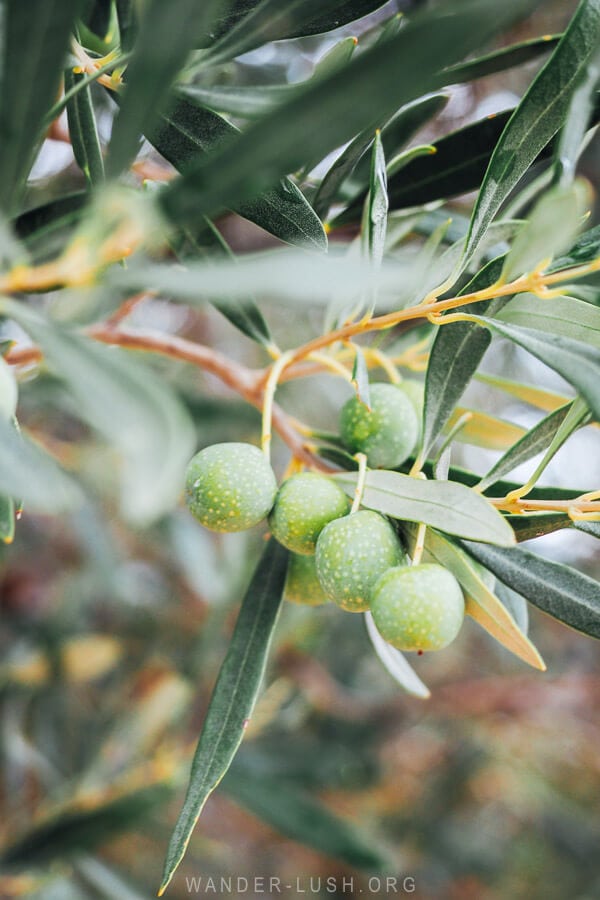
Like Lin on the shores of Lake Ohrid, Upper Qeparo is a great place to visit if you want a break from the beaches. It offers a slice of ‘authentic’ life and a look at the vernacular architecture that once dominated the villages behind the riviera.
It hasn’t had the ‘Dhermi treatment’ – that is to say, no big hotels have moved in (yet). The trade off is that Qeparo is definitely a bit rougher around the edges and perhaps a little less aesthetically pleasing (in the Instagram sense, at least) by comparison. As with many places in Albania, trash is unfortunately a problem here.
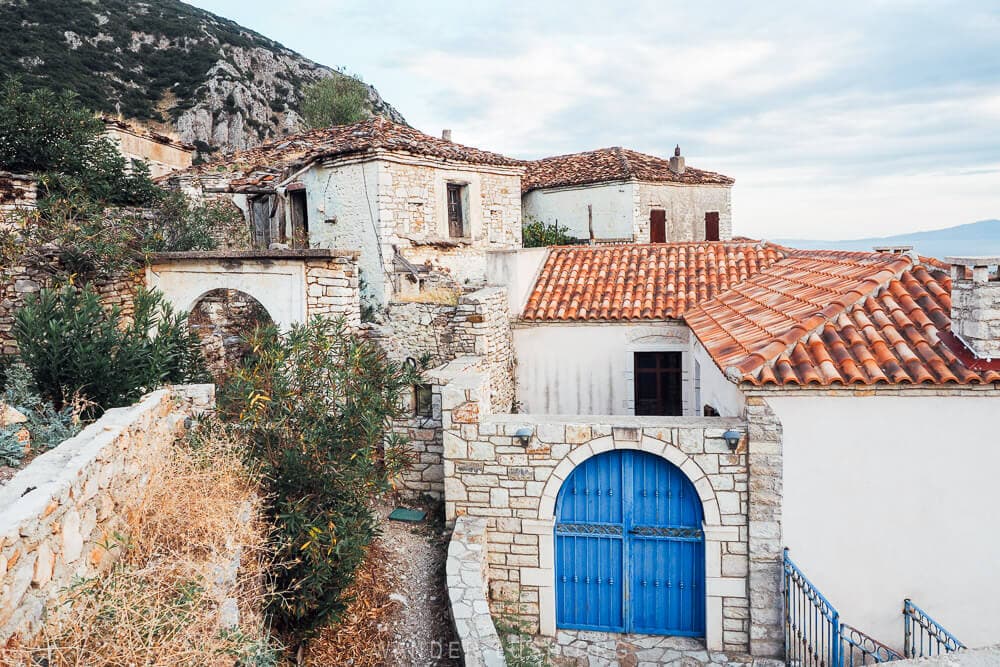
To be sure, Upper Qeparo is tiny. You can see the entire village and nearby castle-tower in just a few hours on foot. (The village is not navigable by car, so walking is required – and it’s a little steep and uneven in places.)
If you’re staying on the coast, it would make for a great half-day trip. We decided to spend two nights in Upper Qeparo as a way to wind-down at the halfway point of our Albania road trip. We found excellent accommodation in Villa Porta, and were pleasantly surprised to find two stellar restaurants in the village.
How to get to Upper Qeparo
Upper Qeparo is easiest to reach with your own car. The road up to the village is narrow but fully sealed. We had no issues with a small sedan.
If you’re coming from Himara, pass the olive oil factories and make a left at this intersection, before the turn off for Qeparo Beach. It’s a gradual climb up to the village with a few hairpin turns, but all in all a very easy drive. Stop along the way for a nice view.
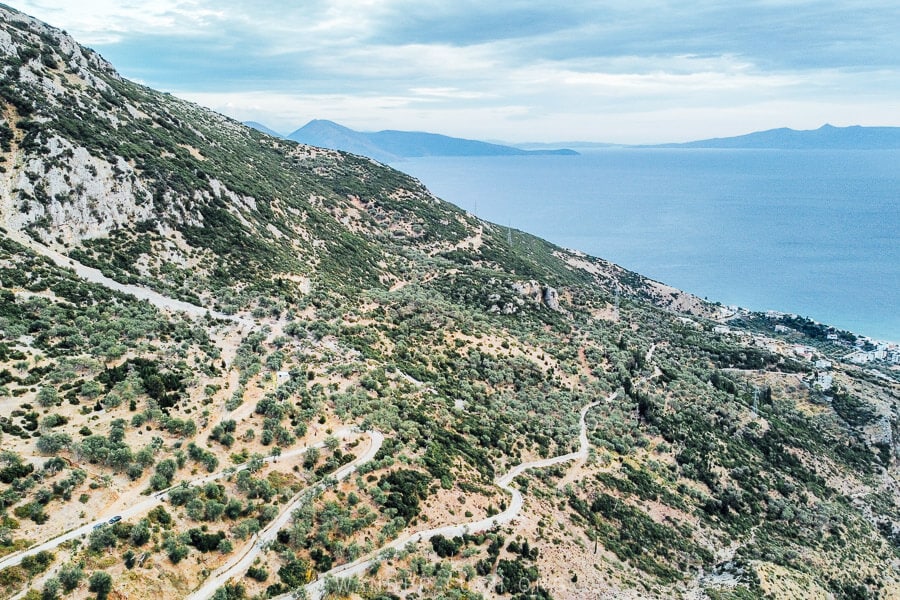
Thinking of self-driving in Albania? I recommend hiring a car from a local agent via Local Rent. Prices are competitive, and most vehicles do not require a cash deposit or a credit card. I used Local Rent on my recent trip to Albania and couldn’t have been happier with the service.
Free parking is available in this area. You can drive further in (we saw lots of cars parked up higher), but we left our car here as we were a bit sheepish about the loose gravel roads.
If you don’t have a car, you can use any bus that travels the main coastal road (e.g. the Himara-Saranda bus) to travel to Lower Qeparo, then continue the rest of the way by foot.
Alight at this intersection then follow the road. The 2.4-kilometre walk up to the village should take around 40 minutes.
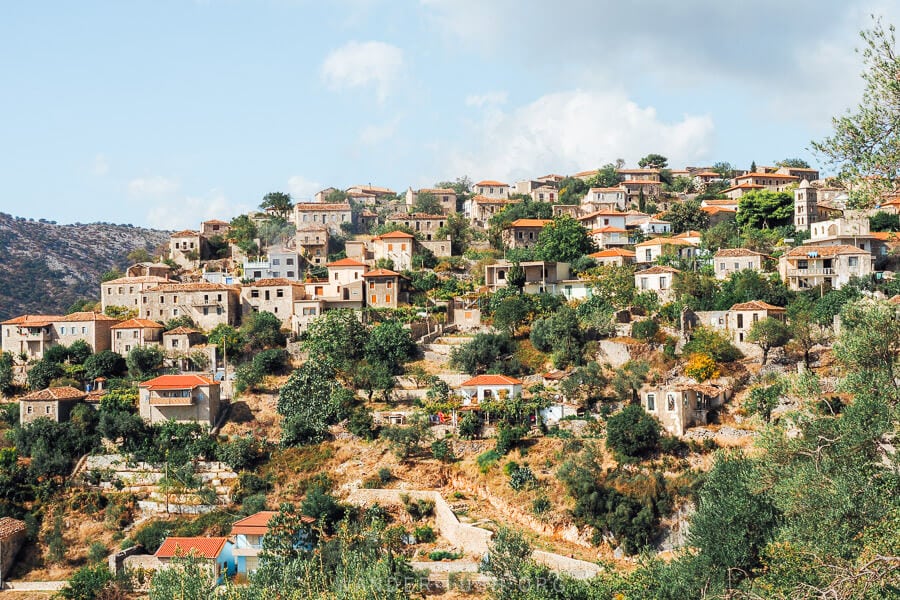
Good to know: There are no ATMs, banks or supermarkets in Upper Qeparo (only a small convenience store). Remember to get cash and any supplies you might need before you drive up. We did our shopping at Riviera Market in Lower Qeparo.
Where to stay in Upper Qeparo: Villa Porta Qeparo
Until quite recently, there were no dependable accommodations in Upper Qeparo, meaning that visitors had to limit themselves to a day trip. Accommodations have slowly started to pop up, and there are now a couple of options to choose from.
We were hosted at Villa Porta Qeparo, a boutique four-room property set inside an old stone house at the entrance to the village. Our room was set underground with a few small windows, making it ultra-cosy.
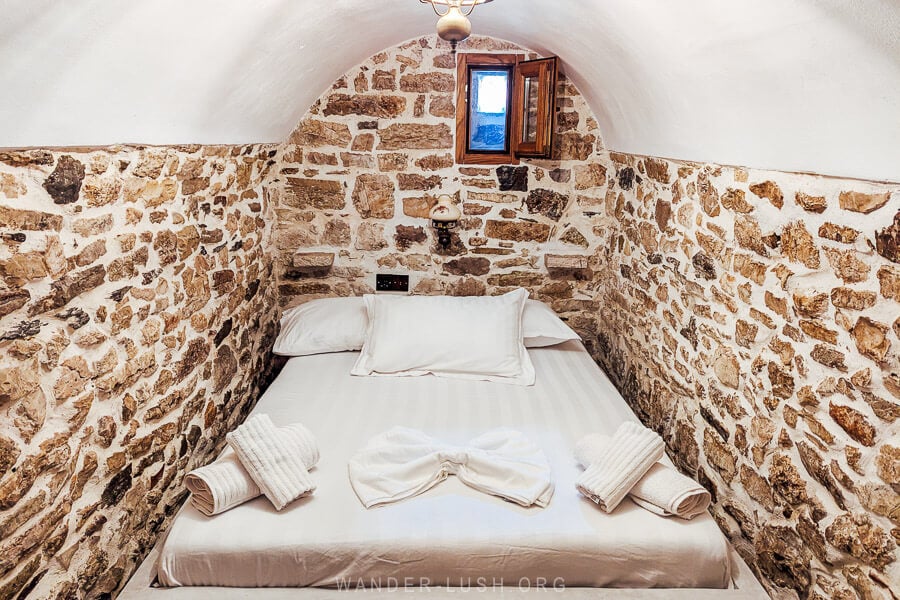
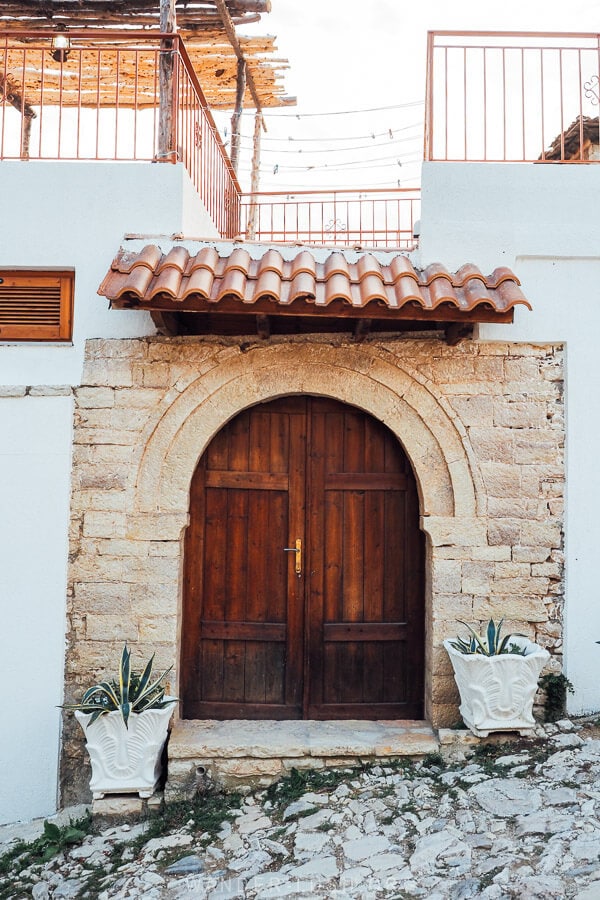
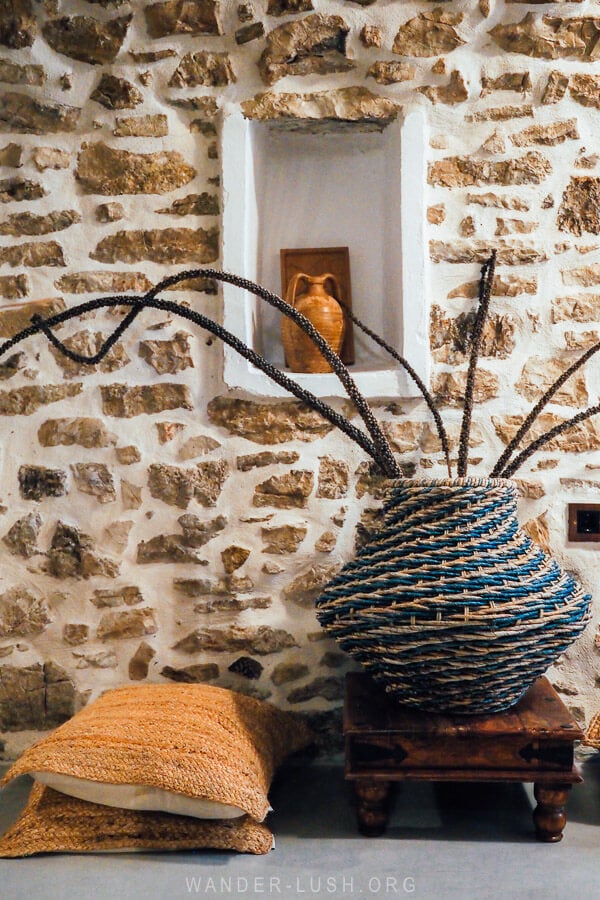
I love the arched nook bedrooms and the spacious bathroom, with its shower and built-in vanity made of stone to mirror the heritage house facade.
The property has a shared kitchen and a lovely outdoor area and terrace with a hot tub.

Things to do in Qeparo
Upper Qeparo village
You will be spending most of your time in Qeparo simply wandering the sokak cobbled lanes. At certain points vaulted arches reach out overhead, giving the village a medieval vibe.
I learned that this construction feature – cutting the ground floor of a building to form an arch so that pedestrians (and donkeys) can freely move beneath – is something unique to Albanian coastal villages like Qeparo and nearby Vuno.
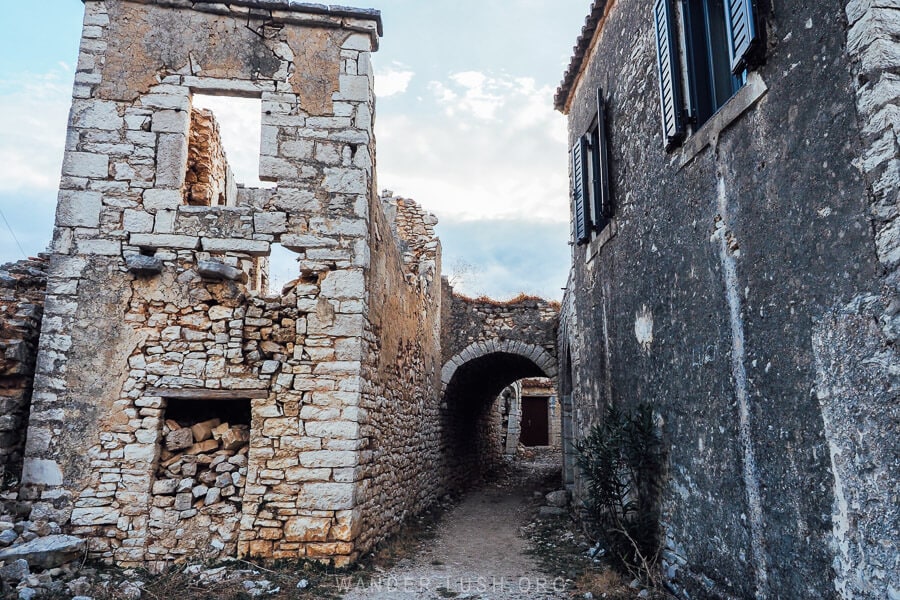
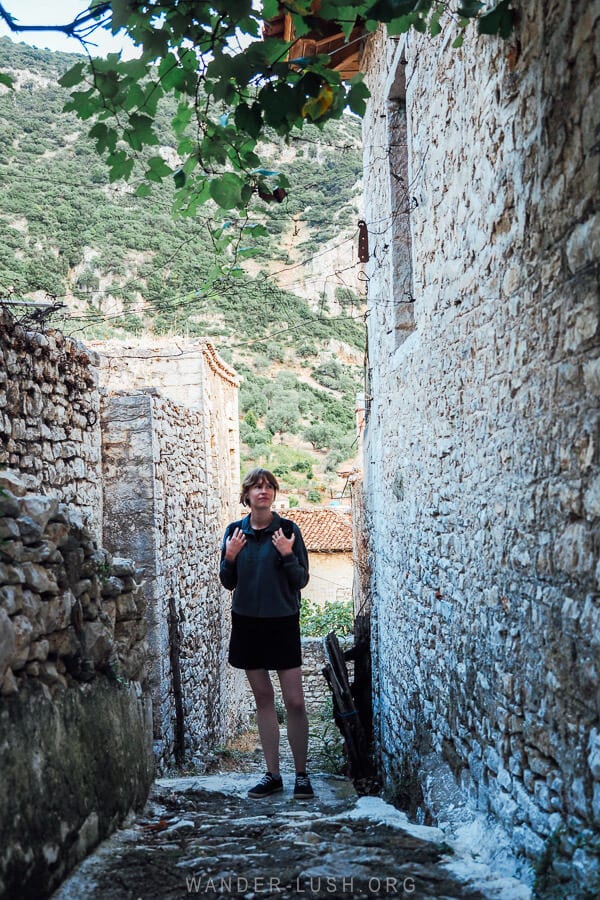
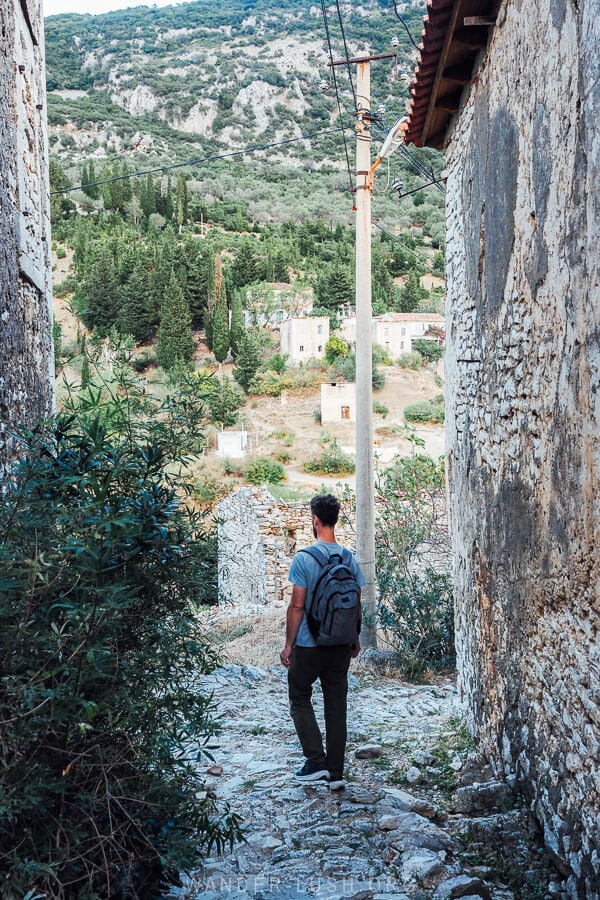
Every old house in Qeparo has an interesting quirk – be it an antique Hand of Fatima door knocker, an engraving in the stone, or in some cases a freshly painted gate. Look out for the stone water fountains decorated with a plaque to commemorate the year they were built.
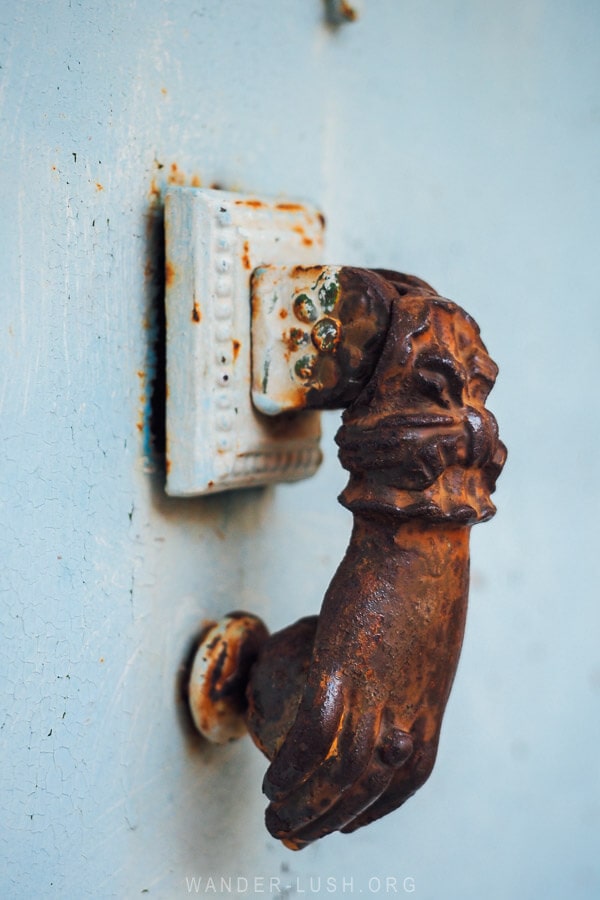
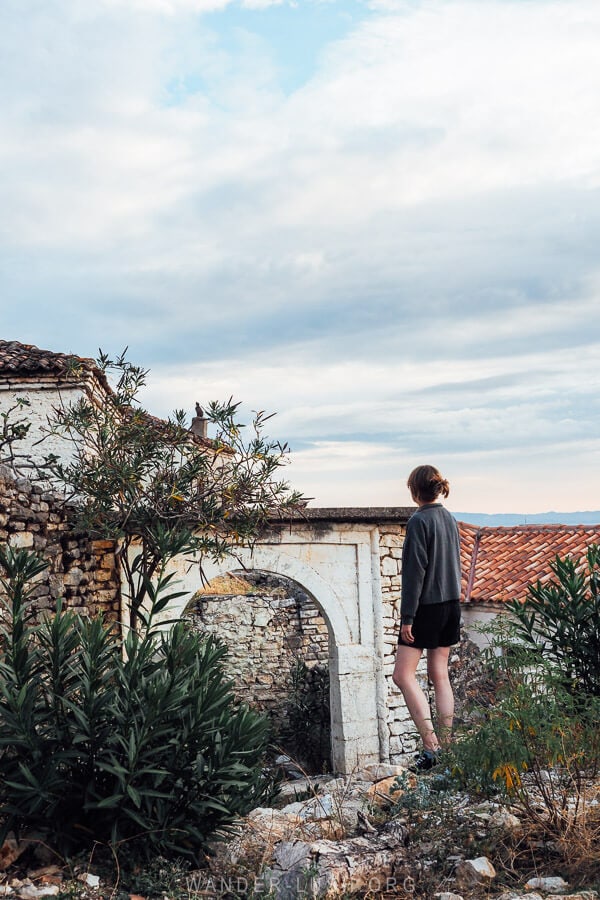
Some of the houses are falling in on themselves. Many are missing their roofs and have been reduced to stoney skeletons. Gates or doors ajar, you can wander inside the yard and nosey about the garden.
The belfry of St Mary’s Church, built in 1796, peeks out above the rooftops. At the time of our visit, the churchyard was locked and inaccessible.
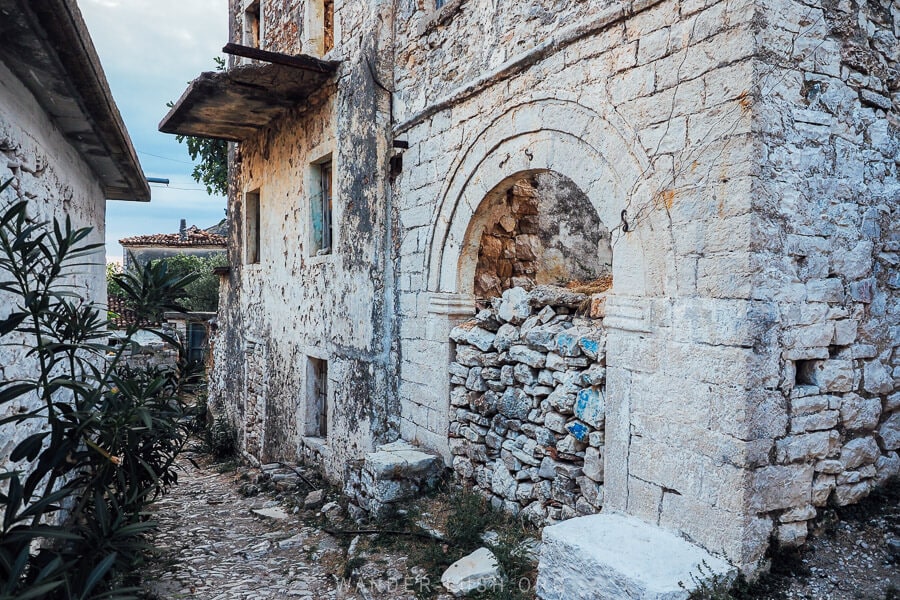
Qeparo feels as if it has been suspended in time. Then just when you least expect it, a shepherd chasing a pair of cows or a trio of friends kicking a soccer ball appear out of nowhere – a reminder that this is in fact a living, breathing village with a storied past and hopefully a bright future.
Karos Fortress & Ali Pasha’s Tower
At the northern end of the village, a walking trail appears. Follow it for 200 metres through the most picturesque olive groves you can imagine, and eventually you will reach the ruins of Karos Fortress.
This was the area’s original settlement, settled some time around the Iron Age according to archaeological studies. Walls and several defensive towers are all that remains of the citadel.
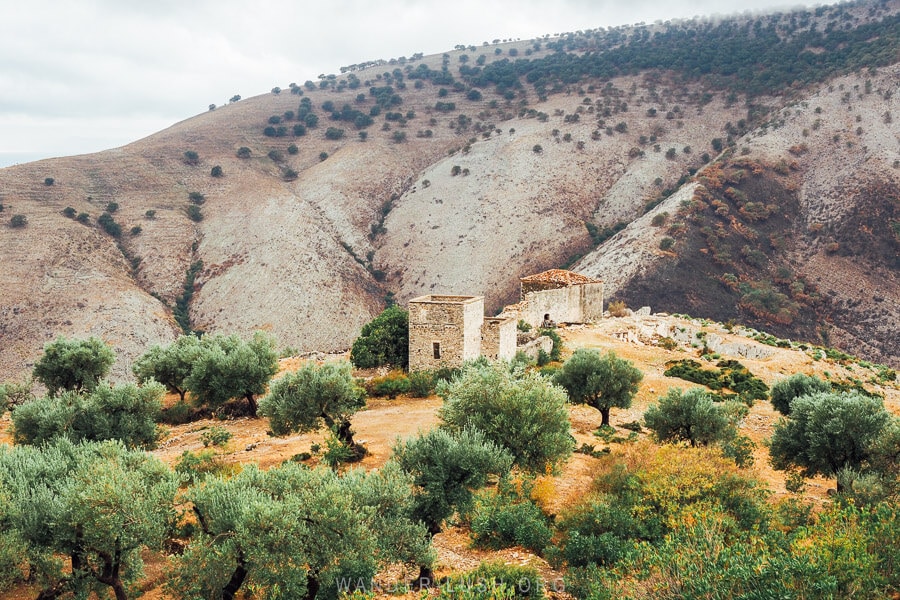
At the centre of the ensemble, Ali Pasha’s Tower is a three-storey-tall stone building with decorative arches and window frames with inscriptions. Added during the late Ottoman period, it is clearly connected to the pasha who was born in nearby Tepelena and ruled Albania from 1788-1822.
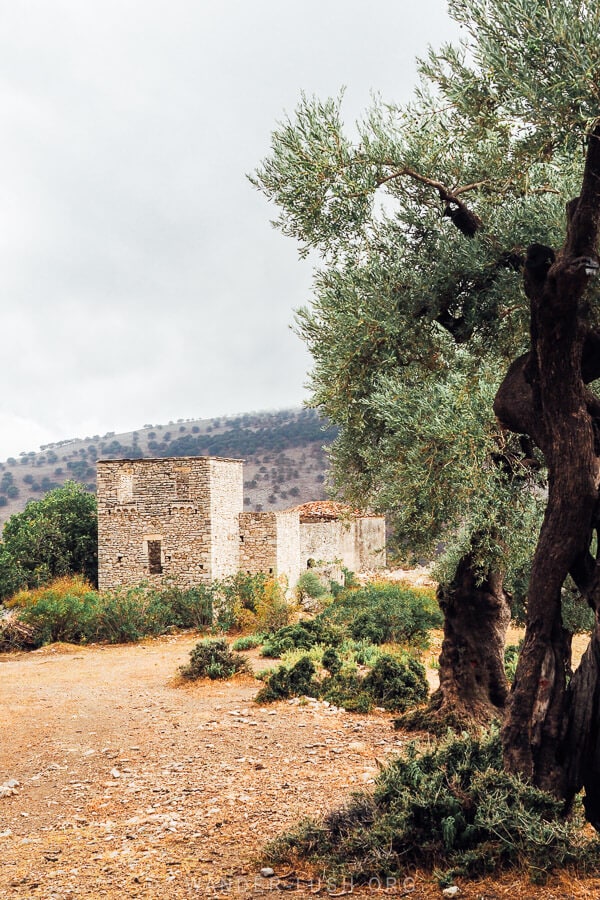
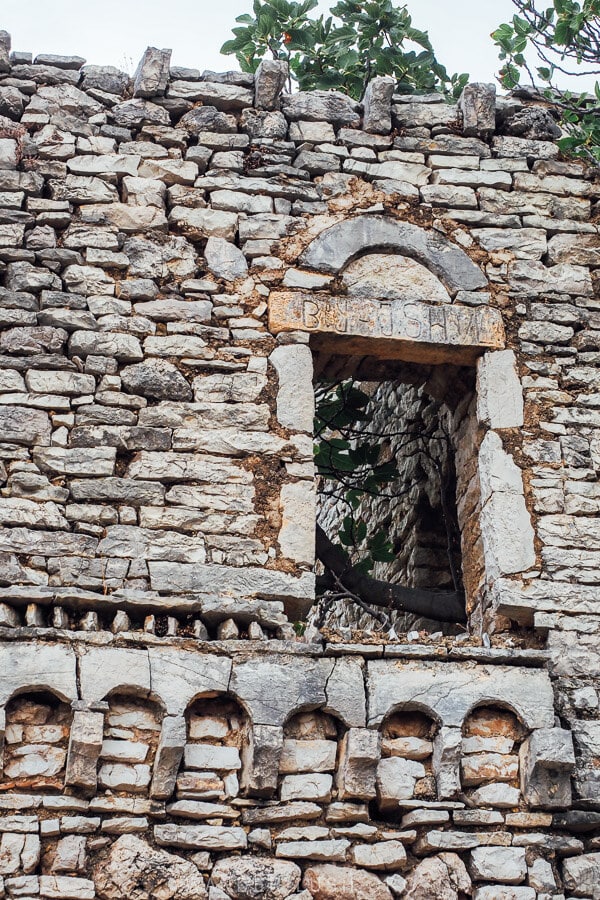
In the 1990s there was an attempt to restore the tower, which is why you see some renewed elements. The project was sadly abandoned, however, and now its only use is as a makeshift livestock pen.
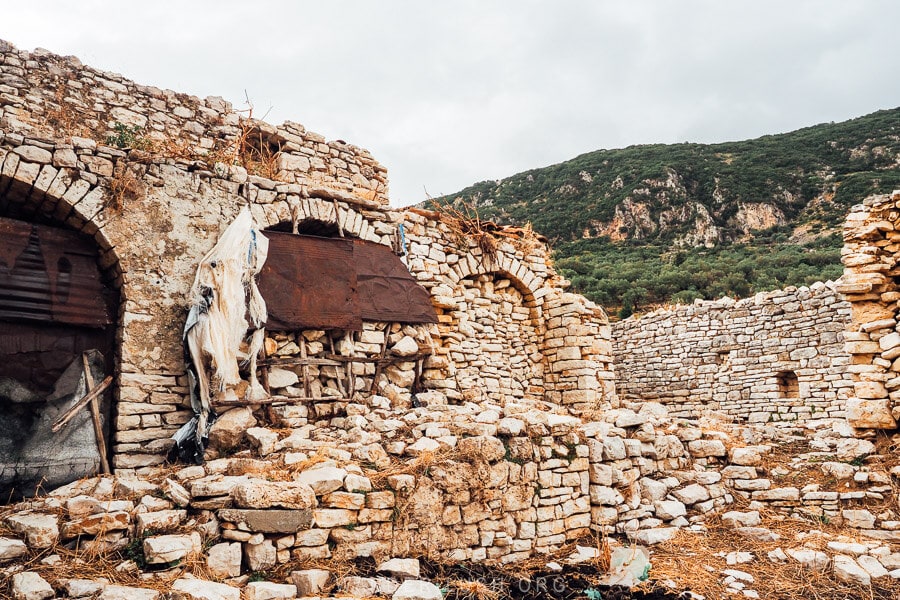
The short walk is worth it for the olive groves and for the panoramic views of Upper Qeparo and the sea beyond. On a clear day, you can see out to Corfu.
Ignore the Google Map pin for Kulla e Ali Pashës, it is incorrectly marked (the castle pictured is Porto Palermo – see below for details).
Qeparo restaurants
Having just come from Dhermi where most venues were already closed for the year, we arrived in Qeparo prepared for self-catering. Much to our surprise, we found a couple of excellent restaurants in Upper Qeparo and ended up eating two of the best meals of our trip here!
With tables set in a little garden under the giant oak tree at the entrance to the village, Te Rrapi ne Qeparo has a magnificent location.
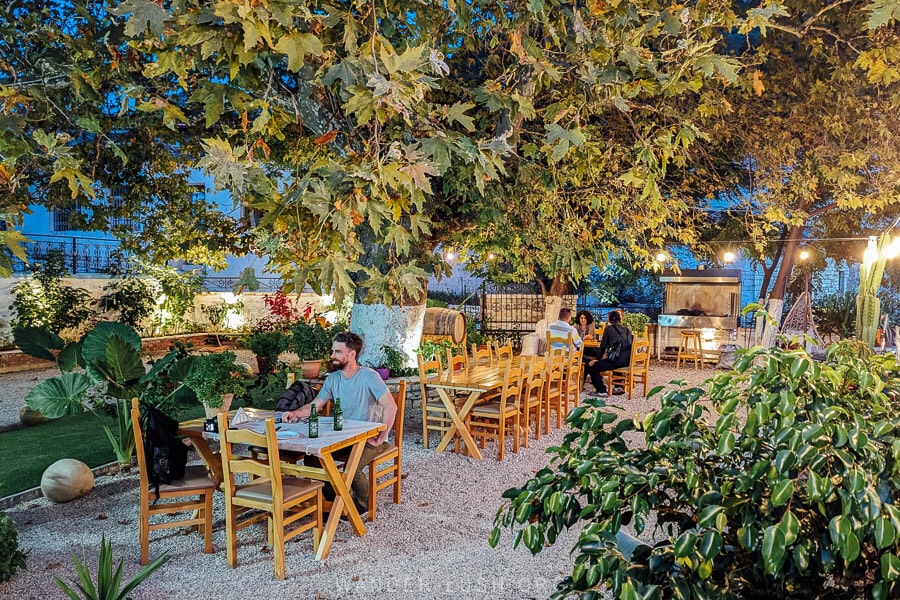
The English menu offers Albanian classics – hostess Veronika ushered us into her small kitchen to choose from the dishes she had prepared. We ended up with a delicious spread of grilled vegetables, homemade byrek, and some seriously powerful tzatziki.
A little further up the street, Xhorxhi Restaurant is a local family owned haunt. We made a reservation the night before and enjoyed a very generous lunch here on our final day. Two grilled fish served with salad, bread, homemade cheese and grilled vegetables set us back a very reasonable 2,000 LEK.
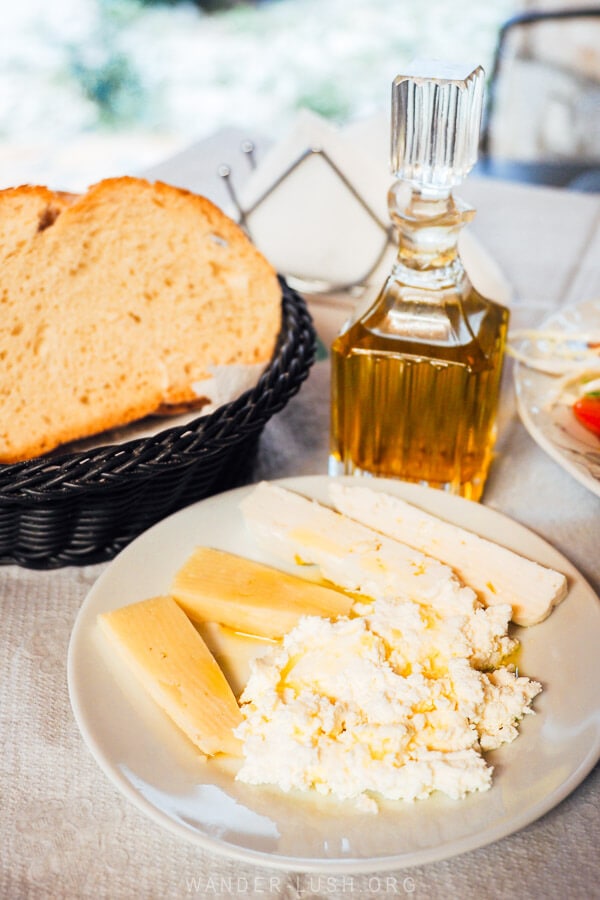
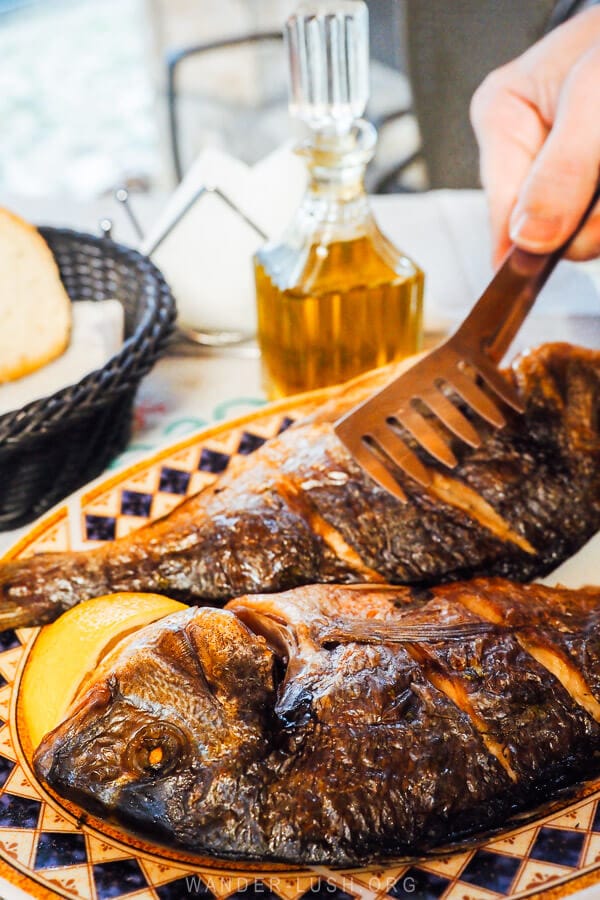
It was a rainy day and a dozen or so men from the village were gathered inside the restaurant drinking. We were serenaded by their renditions of folk songs – it was quite entertaining.
Beaches near Qeparo
We certainly did not visit Albania for its beaches, hence why we focused on exploring villages such as Qeparo instead of staying on the coast.
If you are in the mood for a swim or sunbathe, there are multiple beaches around Upper Qeparo that you can reach by car.
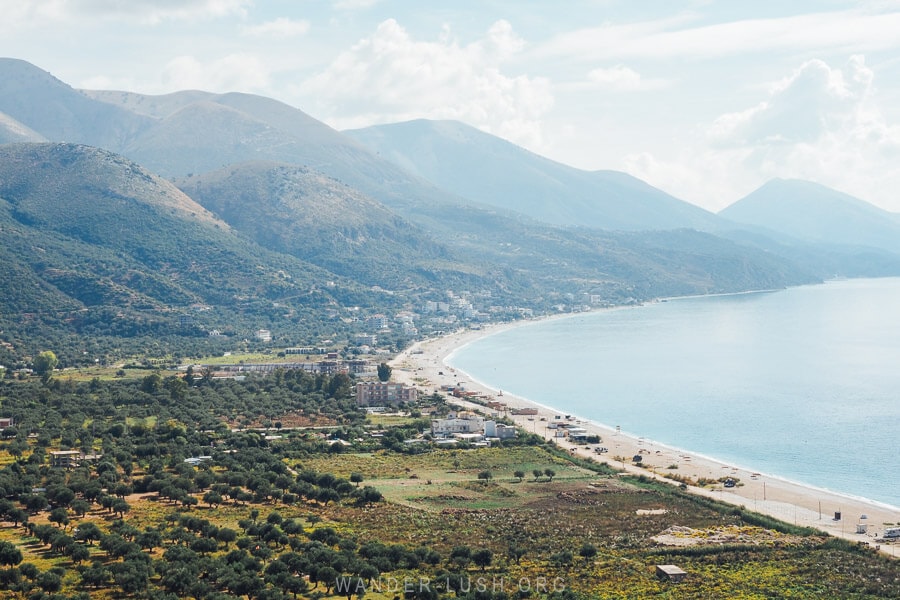
The white pebble Qeparo Beach has a lovely new promenade. It is less touristy than most, making it easier to find a spot on the sand. The sunsets here are legendary.
To the east, Borsh Beach is famous for being the longest beach in Albania. We drove down here one day in search of a restaurant that turned out to be closed for the season. There is a very large construction project going on, which does detract from the atmosphere.
Travelling the opposite way back up the coast, Porto Palermo Beach is a free beach that is quite sheltered. The clear waters here make it ideal for snorkelling.
More things to do near Qeparo
Porto Palermo Castle
A 20-minute drive from Qeparo, Porto Palermo is one of the most distinctive castles in Albania. It sits on a small island connected to the mainland by a man-made land bridge and can be accessed on foot, with parking available in front of the small restaurant.
The castle’s distinctive triangular shape is the work of French engineers who were recruited for the project (then promptly dispensed of once it finished, as the story goes) by Ali Pasha in 1804.
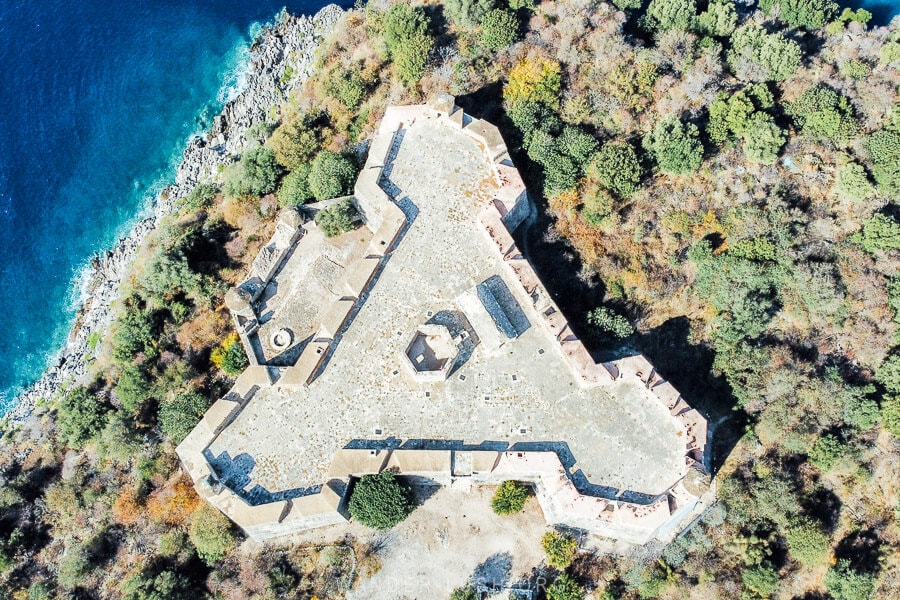
Unfortunately we arrived to find the castle gates locked – opening hours shift in winter, and someone forgot to update Google Maps. From October 13 until mid-April, the castle closes early at 2pm, and is completely closed on Mondays. Entrance costs 300 LEK (cash only).
We missed out on seeing the prison and the patrol towers, but we did get a nice view of the castle from above courtesy of our drone.
The ‘Submarine Bunker’
During Albania’s communist period, the Castle of Porto Palermo served as a Soviet submarine base. The so-called ‘submarine bunker’ is located nearby and is part of the same military complex.
I was very excited about seeing an underwater bunker. But as soon as we arrived at the spot on the highway where you turn off to drive down to the water’s edge, I could see that it was not a bunker at all, but rather a tunnel.
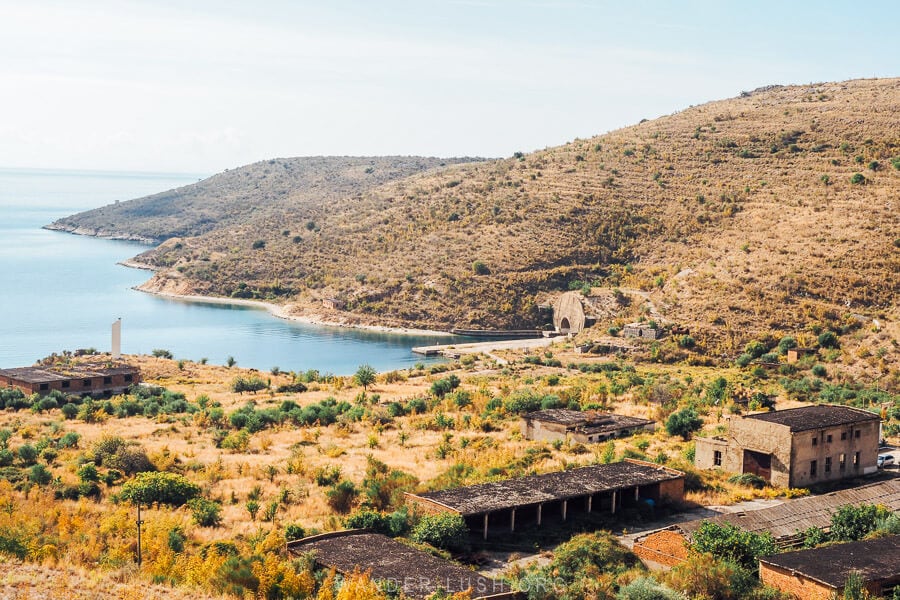
The (non)road looked a bit too adventurous for our Fiesta, so we decided to skip it and be satisfied with a view from up high instead. Close to the tunnel we could see military barracks and an obelisk-shaped war memorial. We saw a few people walking around, so I’m not sure if it’s an active military zone or not.
Based on recent reviews, it is still possible to swim on the beaches around the area and go inside the concrete tunnel as well.
Himare Castle
Located 30 minutes from Qeparo in the same direction, Himara Castle is a must-see on the Albanian Riviera. We arrived here in the early morning and had the entire place almost to ourselves – save for the families who live near the entrance to the castle and were busily harvesting olives. Further up the path, we almost got knocked off our feet by a herd of goats!
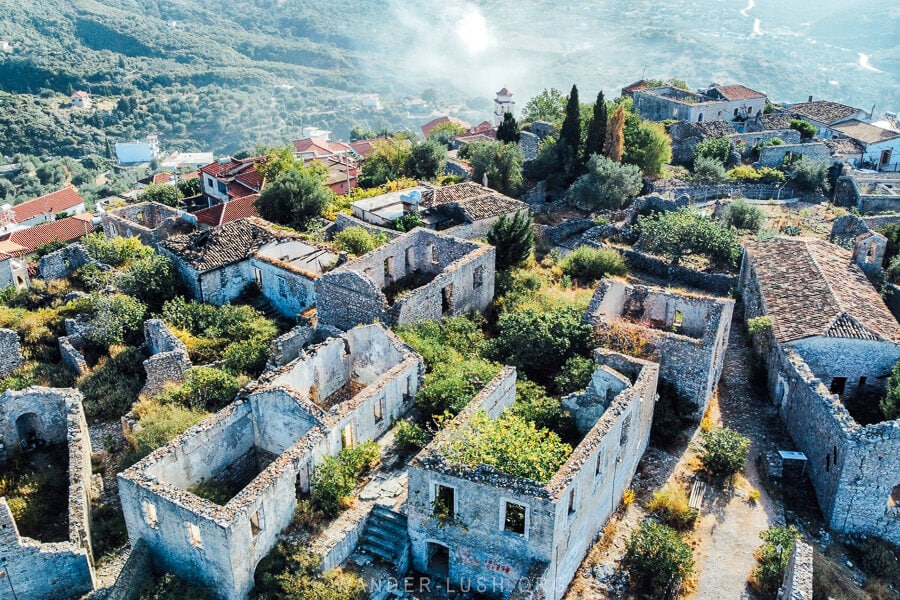
The castle consists of different towers, chapels and other ruins. Lookout points and bench seats have been set up at the most scenic spots, where you get uninterrupted views of the sea.
Entrance to Himara Castle is free, and parking is available under the olive trees at the Tourist Info point. If you’re feeling peckish, Cafe Butterfly inside the castle grounds serves coffee and homemade cakes. It’s very pricey but the views are nice.
Dhermi & Vuno villages
Dhermi and Vuno are two more beautiful villages in Albania that you can visit on the drive up or down the coast. Both are located north of Qeparo, en route to the Llogara Pass and Vlora.
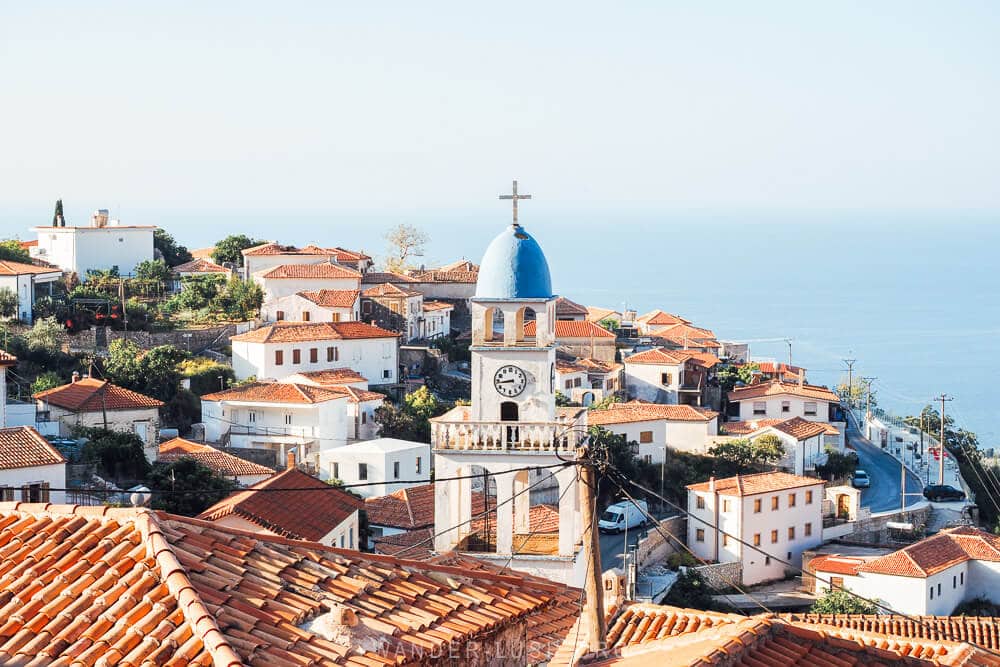
For things to do in Dhermi and more details about Vuno, refer to my Dhermi guide.
Where to go next: Onward travel from Qeparo
After Qeparo, we continued down the coast towards Saranda and Ksamil. The drive south from the village is absolutely exquisite – the sea of mountains reminded me of the landscapes in Northern Vietnam.
We felt like we had seen enough of the riviera, so after quick stops in Saranda and Butrint, we headed inland to the Blue Eye and the Field of Bunkers before arriving at our next stop, Gjirokaster. It was a big day, but we comfortably fit everything in.
More ideas for Albania
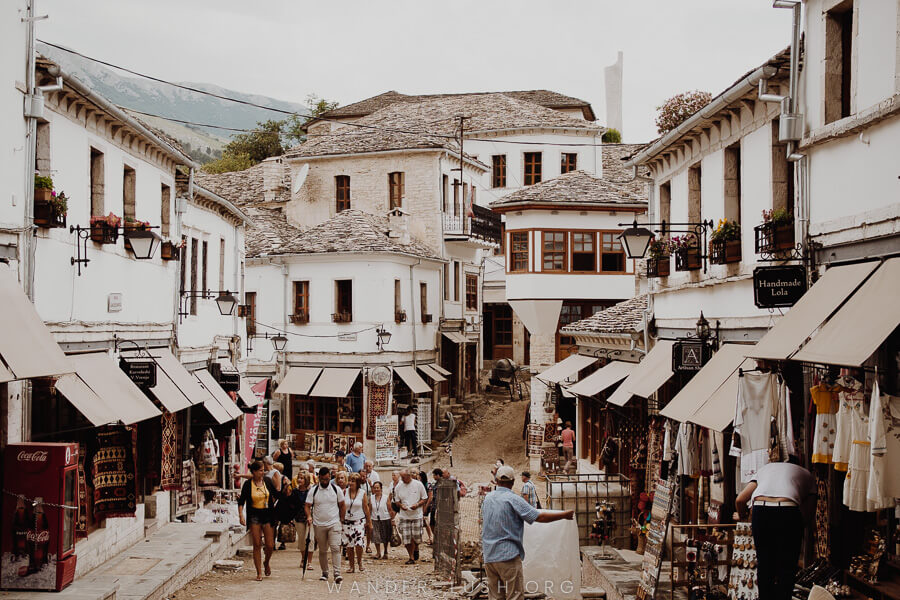
Albania Travel Guide
Discover insider tips, itinerary inspiration, and all the best things to see, do and experience in Albania!
Albania Essentials
My favourite resources and tools for planning a trip to Albania.
More from Albania
Albania Travel Guide
Discover insider tips, itinerary inspiration, and all the best things to see, do and experience in Albania!



